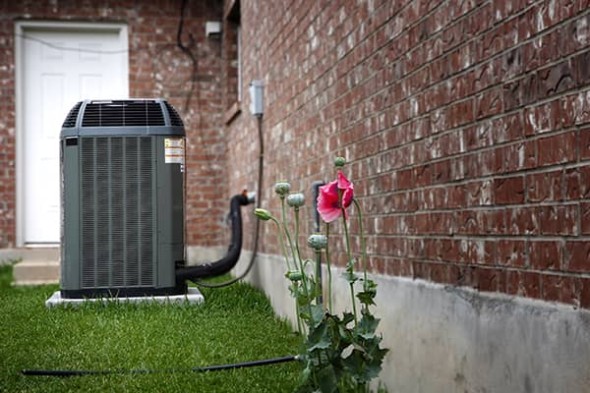Heat Pumps 101
Posted on May 31, 2023 by Charlie Krouse
Tags, Energy, General Interest

Heat pumps are an energy-efficient solution for heating and cooling homes. These appliances help ease your carbon footprint and reduce your energy costs. In this blog, we lay out what a heat pump is and how to use one.
What is a Heat Pump?
A heat pump is a device that moves heat from one place to another. Heat pumps take the heat that is already in the air and moves that heat inside or outside your home.
In the winter, they take the warm air from outside and move it inside to warm your house. In the summer, they take the warm air from inside your house and move it outside your home to keep your home cool.
Due to their design, heat pumps use less energy. A traditional furnace is around 95% efficient whereas a heat pump is about 200%-300% efficient. This means you save a significant amount of money each month on your bills. Using less energy also reduces your reliance on fossil fuels in your home!
So Now You Have a Heat Pump, How Do You Use It?
Heat pumps work similarly to your typical heating and cooling systems with a few quirks. You can control the temperature on a heat pump using a remote thermostat, just like you could with a traditional heating and cooling system, they are installed indoors and are mounted high on the wall near the ceiling, and require their filters to be cleaned occasionally.
Avoid using auto mode. This can put you at risk of the heat pump turning on the AC in the dead of winter. Heat pumps work to maintain a constant temperature when in auto mode, so it will alternate between heating and cooling if you use this mode.
Plan for your climate. Standard heat pumps are great for milder climates like Oregon, where much of the state doesn’t see a lot of freezing temperatures. For areas that see more freezing temperatures, a cold-climate or all-climate heat pump may be a better option. If you live in a colder region, like in the mountains or Eastern Oregon, combining a standard heat pump with a furnace on super cold days is a alternative solution.
Keep vents open and directed. You want to be sure you’re allowing airflow throughout your home. Keep the vents pointing down when heating your unit and up when cooling to circulate the air best.
Regularly clean the indoor filters. Heat pumps work best when the filters are clean. Your indicator light turns on when it is time for you to clean your filters. Usually, you only need to clean your filters once every few months, depending on use.
Ready to Make the Switch?
Heat pumps are an excellent way to transition towards a less fossil fuel reliant home. As our state works to reduce fossil fuel reliance, switching your appliances to more energy-efficient solutions is a great step.
Read More:
My Experience Switching to an Electric Heat Pump
Busting Gas Myths: Heat Pumps vs. Gas Heating
Thanks to the Inflation Reduction Act in 2022, you could qualify for a tax credit if you switch to a heat pump in your home. New federal income tax credits are available through 2032 providing up to $3,200 annually to lower the cost of energy-efficient home upgrades by up to 30%.
Stay Up to Date on Oregon Utility Issues
CUB will continue to advocate for people in Oregon on major utility issues. Sign up for the CUB email list for the latest updates, action alerts, and news on policies that affect the utilities your home relies on.
To keep up with CUB, like us on Facebook and follow us on Twitter!




05/31/23 | 0 Comments | Heat Pumps 101